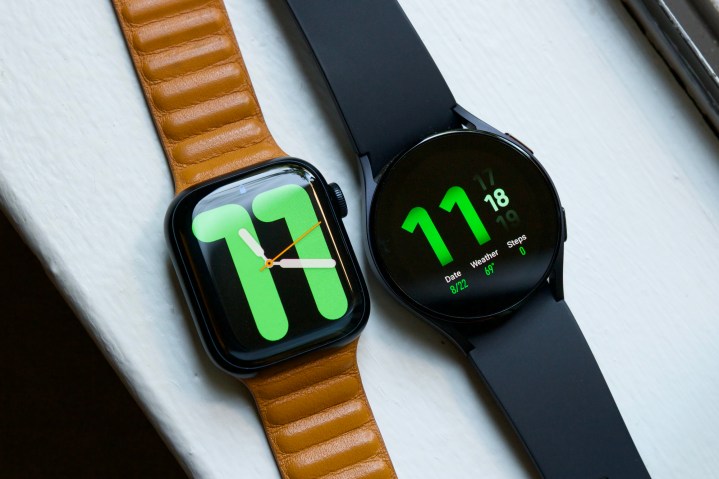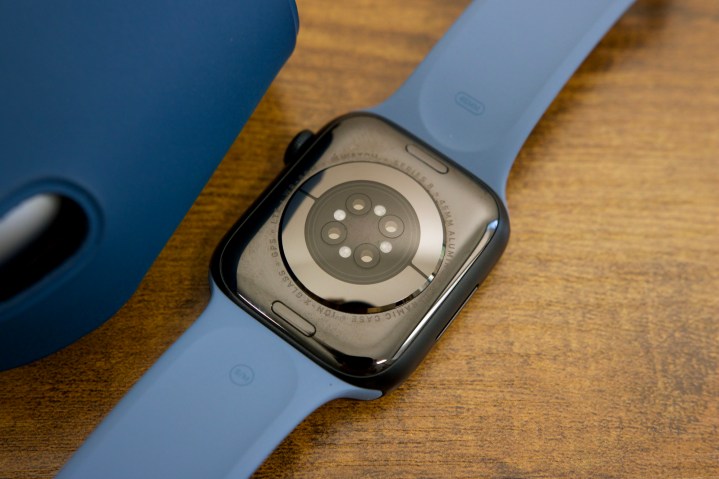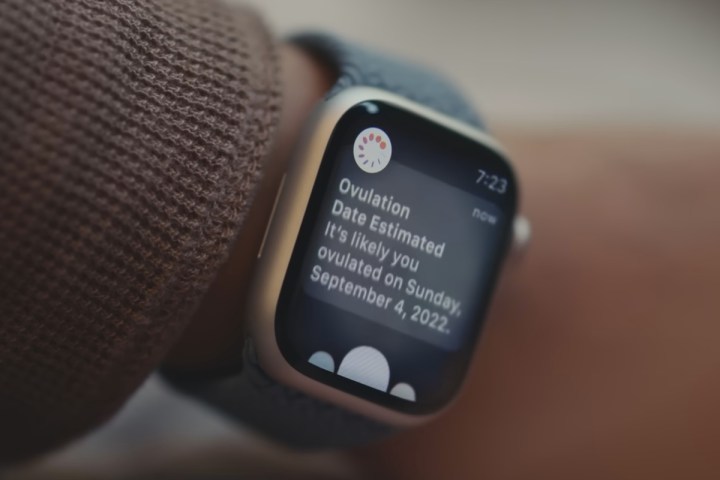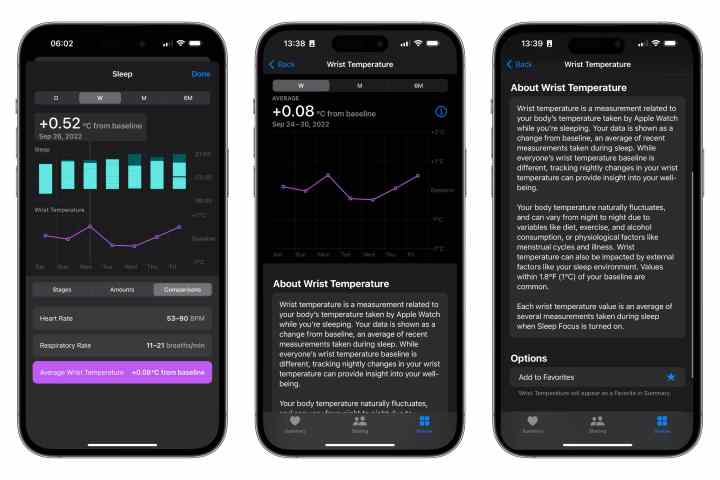How to use the Apple Watch Series 8 temperature sensor
The most significant improvement to this year’s Apple Watch Series 8 is the addition of a new wrist temperature sensor. It’s the first new health sensor coming to the Apple Watch since the Series 6 added support for blood oxygen level detection. It’s one of just two features, along with car crash detection, that differentiates the new Apple Watch from last year’s model.
However, Apple only allows the new temperature measurement capabilities to be used for two very specific areas of health monitoring, and there’s no indication third-party developers will have access to them. It’s an interesting contrast to Samsung’s Galaxy Watch 5, which also introduced a body temperature sensor that doesn’t yet have to be used for anything – but for which Samsung has promised to work with developers to come up with third-party solutions.

While applications for the new temperature sensor are pretty narrow at this point, there is some hope that Apple could expand the sensor’s capabilities in future WatchOS updates, or at least create an API for third-party apps to consume. Still, it’s important to understand the limitations of the technology that prevent it from being a full-fledged thermometer.
sense body temperature
When we first heard about Apple’s work on a temperature sensor for the Apple Watch, many hoped it would be sophisticated enough to support a wide range of health applications. The idea of being able to measure body temperature on the wrist opened up numerous possibilities, from monitoring general health and well-being to detecting early signs of infection.
However, it quickly became apparent that the human body does not function in a way that a temperature sensor on the wrist would be conducive to. There’s a reason medical professionals take your temperature in your mouth, ear, or less comfortable parts of your body. To get a good reading of core body temperature, you need to be fairly close to your core.

Because the Apple Watch is worn on the wrist, it rules out the possibility of a temperature sensor that can reliably tell if you have a fever. There is simply no way to get an objectively accurate temperature reading on a body extremity.
It’s also why Apple avoided calling the new feature a “body” temperature sensor. Most of Apple’s documentation refers to it as either “Wrist Temperature Sensor” or just “Temperature Sensor”. It doesn’t measure your true body temperature, only the temperature on your wrist.
To achieve this, the Apple Watch Series 8 and Ultra have two separate temperature sensors, one on the rear crystal and one just below the display.
cycle tracking
However, it turns out that this is enough to support some valuable features. Apple Watch may not be able to determine your temperature in absolute degrees, but it can set a “normal” baseline temperature and then record when it falls above or below normal. This lends itself to a feature that is particularly useful for many women.
When Apple unveiled the original Apple Watch and its HealthKit framework in 2014, it was widely criticized for omitting all features related to women’s reproductive health. Apple’s health app could track the most obscure vitamin and mineral intakes, but had no place for women to record their menstrual periods.
Apple quickly addressed this the following year with iOS 9 and WatchOS 2, and by the time WatchOS 6 launched in 2019, the company had taken women’s health even more seriously with a dedicated cycle-tracking app.
The new app was very valuable for women who wanted to record information about their menstrual cycles somewhere. However, it was still an entirely manual process. Women had to enter specific values such as basal body temperature or the results of an ovulation test. From there, it could predict fertile windows and provide other health insights, but it was only as reliable as the data you put in.
The Apple Watch Series 8 (and Apple Watch Ultra) temperature sensor takes much of that guesswork out of the equation. There’s a measurable change in a woman’s body temperature after ovulation, and the new sensor on the Apple Watch can detect this to provide a retrospective estimate of when ovulation occurred — without having to take manual temperature readings and enter them into the cycle-tracking app .
It’s a promising feature for anyone trying to conceive a child or just want more insight into their menstrual cycles. However, don’t expect it to be ready to use out of the box. Your Apple Watch needs time to get to know you.

Because the temperature sensor can only detect differences, the Apple Watch must first establish a firm baseline to determine your normal temperature and when changes typically occur. This means that you have to wear the Apple Watch continuously for at least two menstrual cycles in order to collect the necessary temperature data from your wrist.
To avoid false readings during everyday activities, wrist temperature data is only recorded while you sleep. That means you’ll need to wear your Apple Watch to bed every night with Sleep Focus on for at least two months before you’ll get an ovulation estimate. It also helps if you’ve already logged your periods accurately in the Cycle Tracking app to give the Apple Watch an indication of when you’re more likely to ovulate.
With the Apple Watch released less than a month ago, it’s still too early to tell how well this will perform in real-world conditions. Hopefully we’ll see some hands-on reviews in the near future. In the meantime, Apple cautions that cycle tracking should not be used as a form of birth control or to diagnose a health condition without a doctor’s visit.
sleep tracking
With Apple emphasizing the temperature sensor for predicting women’s periods and fertility, it’s easy to dismiss the new feature as utterly useless for people without ovaries.
However, it turns out that the Apple Watch records your wrist temperature data regardless of whether you have cycle tracking set up, and is happy to offer that data as part of your nightly sleep tracking results.
If you regularly wear your Apple Watch to bed for sleep tracking, the Series 8 (or Ultra) will take your wrist temperature while you sleep, taking measurements every five seconds to get an overall temperature for the night. After five nights of at least four hours of sleep each night, you can see a chart showing how much your temperature varies from night to night.

You can find your wrist temperature data under Body Measurements in the iPhone Health app. It will also appear in the comparison section of your sleep tracking data. For the first five days of wearing your Apple Watch to bed, you’ll only see an indication that more data is needed, but once there’s enough data, you’ll get a backward estimate that includes those first five days.
Apple doesn’t offer much insight into interpreting this data, only suggesting that it “can provide insights into your well-being.” Still, it’s an interesting metric for those who want to track every detail of their health. It could also prove helpful for your doctor in diagnosing a specific problem or medical condition. While Apple notes that fluctuations of up to 1.8 degrees are common, more extreme fluctuations could be a sign you need to see your doctor.
Editor’s Recommendations